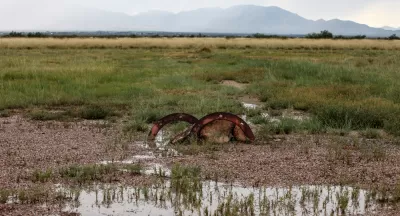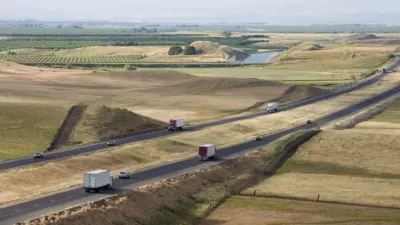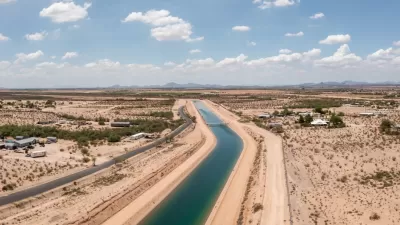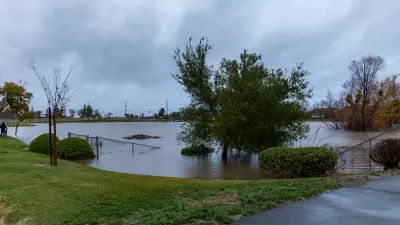For decades the arid state has required most new construction projects to demonstrate adequate water supply, but at the edge of the next dry spell, two lawmakers are trying to get rid of the rules.

In a sweeping piece that covers the history of groundwater management in Arizona, as well as the issues it will confront in the future, Dustin Gardiner of The Arizona Republic reports that in the current legislative session, Arizona's elected officials have been working on several bills that would begin to dismantle progressive planning and pumping regulations that have been in place for decades.
Most of the current regulations are rooted in the 1980 Groundwater Management Act, which is legislation that possibly enabled one of the nation's driest states to endure the most recent drought without catastrophe, and could be important as the state descends into the next dry spell. It mandates, among other things, that developers of new subdivisions in the state's most populous areas demonstrate that they have a 100-year water supply before beginning construction.
"The lawmakers have described their drive to let counties rescind the 100-year water supply rule—primarily Cochise County in southeastern Arizona —as a move to let local governments decide what’s best for themselves."
The problem, of course, is that groundwater is not a local issue, even according to the Arizona Supreme Court, which ruled in 1981 that aquifers are a shared public resource. Groundwater alone comprises 40 percent of water supply in Arizona, but as is true almost ;everywhere in the U.S., aquifers have been and are being drained faster than they can be replenished.
Once finished, the new bills may not pass the legislature, and even if they do, Governor Doug Ducey has previously vetoed legislation that would deregulate groundwater. But, Gardiner writes, "even if the bills fail, water-policy experts and environmentalists say the push for deregulation at the Capitol speaks to a broader problem," namely that the state seems willing to give up its mantle as a "role model" of groundwater management in the name of furthering development.
FULL STORY: Arizona's aquifers threatened; lawmakers push to cut groundwater rules

Study: Maui’s Plan to Convert Vacation Rentals to Long-Term Housing Could Cause Nearly $1 Billion Economic Loss
The plan would reduce visitor accommodation by 25,% resulting in 1,900 jobs lost.

North Texas Transit Leaders Tout Benefits of TOD for Growing Region
At a summit focused on transit-oriented development, policymakers discussed how North Texas’ expanded light rail system can serve as a tool for economic growth.

Why Should We Subsidize Public Transportation?
Many public transit agencies face financial stress due to rising costs, declining fare revenue, and declining subsidies. Transit advocates must provide a strong business case for increasing public transit funding.

How to Make US Trains Faster
Changes to boarding platforms and a switch to electric trains could improve U.S. passenger rail service without the added cost of high-speed rail.

Columbia’s Revitalized ‘Loop’ Is a Hub for Local Entrepreneurs
A focus on small businesses is helping a commercial corridor in Columbia, Missouri thrive.

Invasive Insect Threatens Minnesota’s Ash Forests
The Emerald Ash Borer is a rapidly spreading invasive pest threatening Minnesota’s ash trees, and homeowners are encouraged to plant diverse replacement species, avoid moving ash firewood, and monitor for signs of infestation.
Urban Design for Planners 1: Software Tools
This six-course series explores essential urban design concepts using open source software and equips planners with the tools they need to participate fully in the urban design process.
Planning for Universal Design
Learn the tools for implementing Universal Design in planning regulations.
City of Santa Clarita
Ascent Environmental
Institute for Housing and Urban Development Studies (IHS)
City of Grandview
Harvard GSD Executive Education
Toledo-Lucas County Plan Commissions
Salt Lake City
NYU Wagner Graduate School of Public Service





























